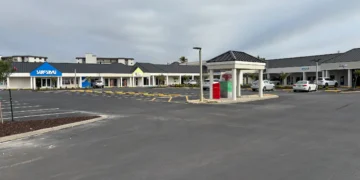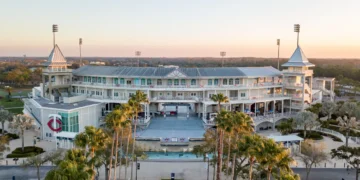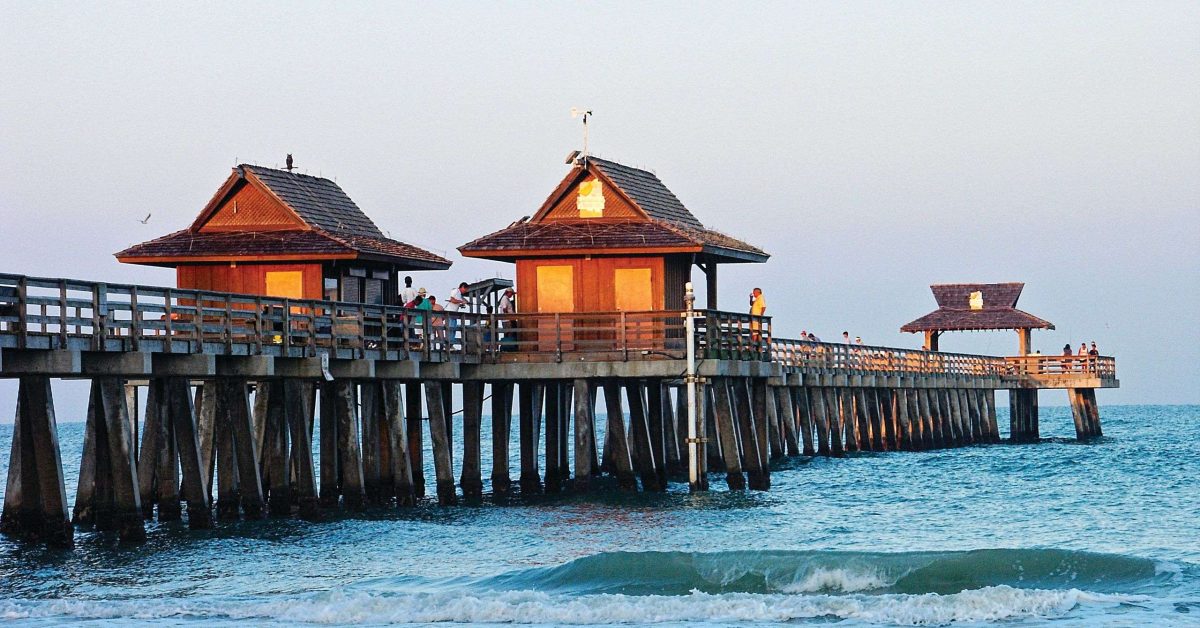The roots of modern-day Naples began as a resort destination, a precedent that forms the basis of the region’s lifeblood even 100 years later.
The local economy has always featured a tourism component, drawing visitors to the area’s natural beauty and remote existence between the bountiful Gulf of Mexico and the Everglades swamps. The destination’s earliest businesses—a hotel, real estate office, retail stores and fishing guides—are still as important in today’s economy as they were 100 years ago, as Collier County and Naples celebrate their first century of incorporation this year.
Basically, Naples’ pristine location along the beach created a quiet winter resort spot for wealthy families from some of the nation’s coldest northern states. The steamship Fearless ferried them to the Naples Pier, which connected the Gulf to the area’s original tourist accommodations: the Naples Hotel, off Third Street between Broad Avenue and 13th Avenue South.
“In the early years, it was really seasonal,” says John Telischak, education manager for Naples Historical Society. “It did start out as a resort—a hotel, initially—and people came here for various reasons. They came here for their health, because the climate was supposed to be good for certain ailments. A lot of places in the United States in the late 19th century, if you were wealthy and you could afford to, you’d go to certain places for respite if you had a certain ailment.”
Guest stationery at the former hotel promoted the healthy climate of Naples on the Gulf, “a beautiful little city on the west coast of Florida,” continuing: “It is in the healthiest part of the healthiest county (Lee) in the United States. Entire freedom from malaria, climate perfect, rain but one day a month during the winter, the finest surf bathing on a beautiful beach absolutely free of undertow, and the best hunting and fishing in Florida right on the spot.”
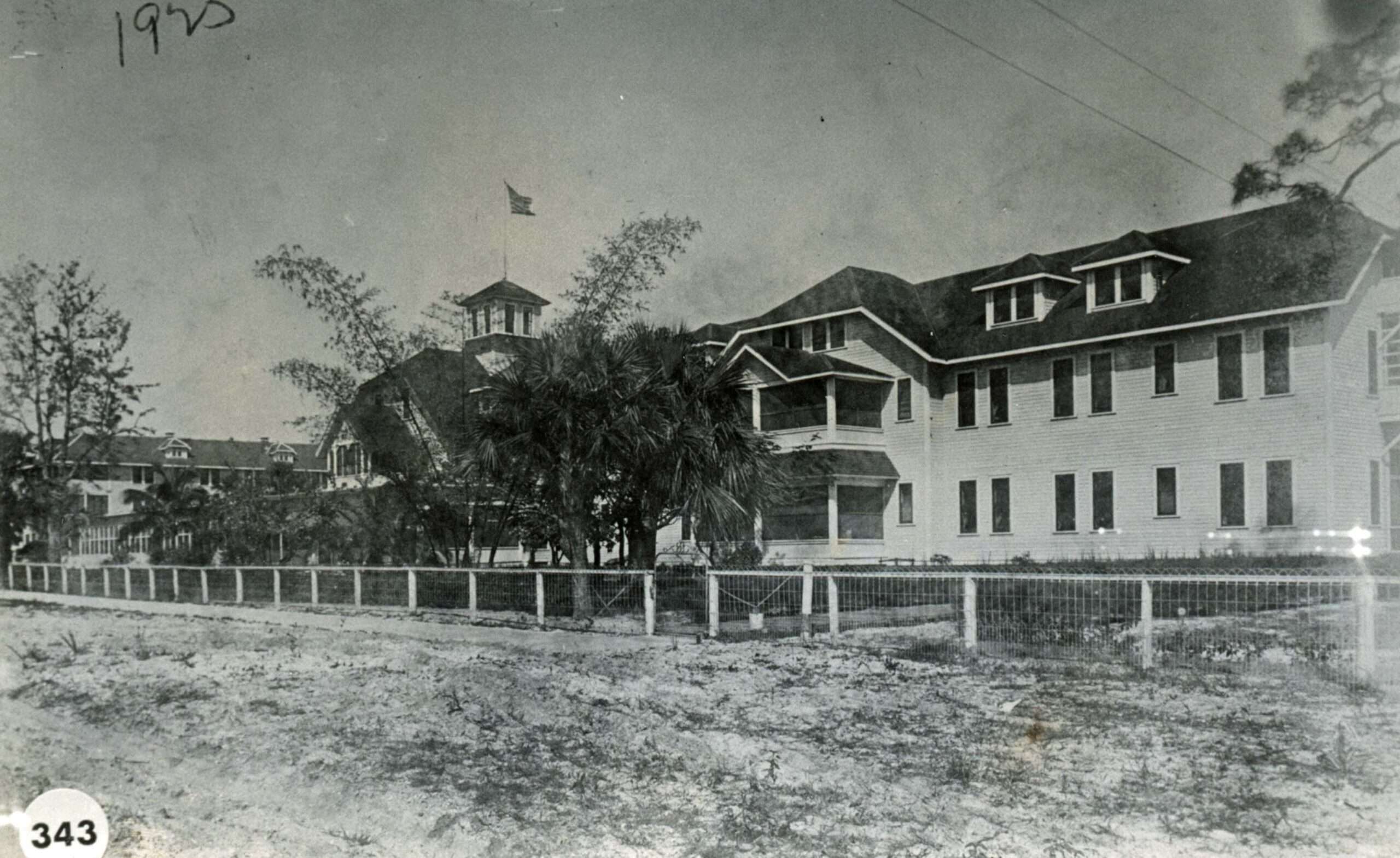
Although the area had long been inhabited by indigenous tribes and later in the 1870s by its first white homesteaders, it wasn’t until the late 1880s that Naples was created.
The city did not exactly come about by chance. In the mid-1880s, two Kentuckians, Walter N. Haldeman and Sen. John S. Williams, sailed along the Gulf in search of the perfect spot for a winter home and a utopian place to create a town—and what eventually would be a real estate boom after the railroad reached the area in the late 1920s.
The personal beachside homes built by Haldeman, the editor of the Louisville newspaper, and Williams, a former Confederate general and U.S. senator, were the original frame houses in what would become Naples, named because of its comparison to Naples, Italy. They created the Naples Town Improvement Company, later shortened to the Naples Company, which built the pier and the hotel and plotted streets and lots.
The wooden pier, first built in 1888, became the iconic link from the land to the Gulf and served as a dock for unloading supplies and people. The pier was the gateway to Naples then and led to the area’s first hotel. It also was the site of the area’s post office until a fire destroyed it in 1922, a year before the town of Naples was incorporated.
As it has been many times since then, the pier was rebuilt in 1924 and lengthened from 600 feet to 1,000 feet. This addition pleased fishermen, who could reel in sports fish from a depth that otherwise would require a boat.
Built in 1889, the Naples Hotel was the center of it all, and was the only hotel until the 1930s. Of course, Paradise Coast wasn’t widely promoted then as it is now. Word about the sunny retreat on the Gulf was mostly spread by wealthy friends and an occasional newspaper article. It didn’t take long for many folks to buy a seasonal slice of paradise sight unseen.
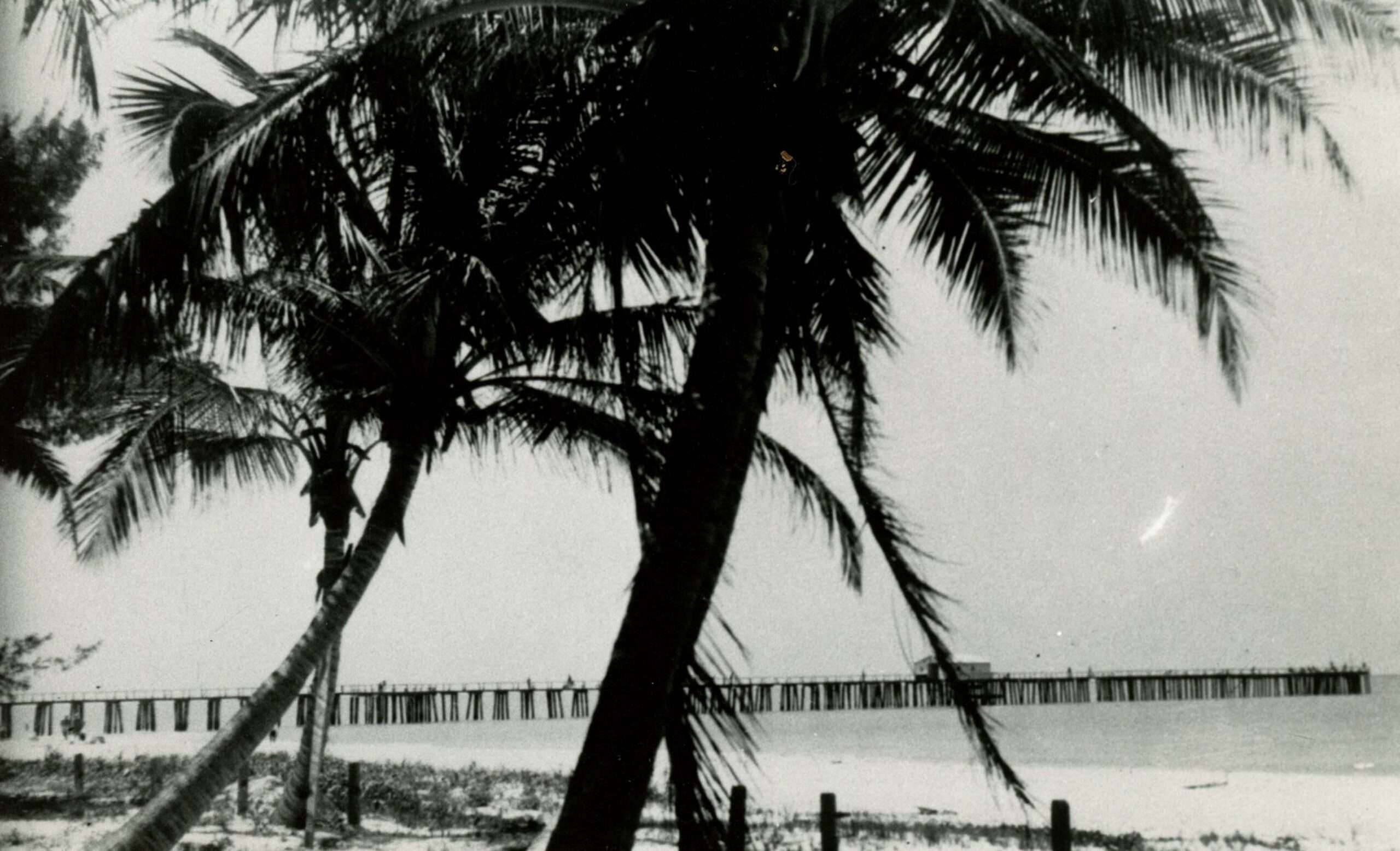
Rose Cleveland, the sister of President Grover Cleveland and First Lady during her brother’s first term, was the first guest to register at the Naples Hotel when it opened on Jan. 22, 1889. The southernmost hotel on Florida’s mainland was proclaimed to be the “Grandest Winter Resort in America,” notes The Founding of Naples, written by Ron Jamro and Gerald L. Lanterman.
“Enchanted, wide-eyed travelers picking their way around packing crates and piles of unused planks on the just-completed pier, instantly lost their hearts to Naples and its simple diversions—sport fishing, boating, surf bathing and snoozing on the hotel’s shady porch,” the authors note. “Fanned by gentle breezes, beachcombers delighted in gathering pretty shells and wandered for miles over a glinting white shoreline as powdery as sugar, yet ‘so smooth and firm that a buggy scarcely makes a track.’ For the more adventurous, bored by surf and sand, there were added thrills hunting for bear and panther in the pine forests nearby.”
The area’s breathtaking, subtropical scenery always was the initial attraction, of course. “People also came here too because it was warm,” Telischak says. “Fishing and hunting were a huge draw. People would go to the beach and walk on it and look for shells.”
Outside of tremendous growth in the population and development in the last century, especially the last decades, not much has changed. People still come to get away, have fun and relax.
“That’s one of those things that make this area a wonderful place to live,” Telischak says. “We still have people that come here because it’s a beautiful place, and they come here to enjoy the beaches and they come here to go fishing. It’s got a charm to it.”
Paul Beirnes, executive director of Naples, Marco Island & Everglades Convention and Visitors Bureau at Florida’s Paradise Coast, is a history lover who made it a point to know as much as he could about Collier County’s colorful past when he relocated to Naples in 2020 after 30-some years in Orlando.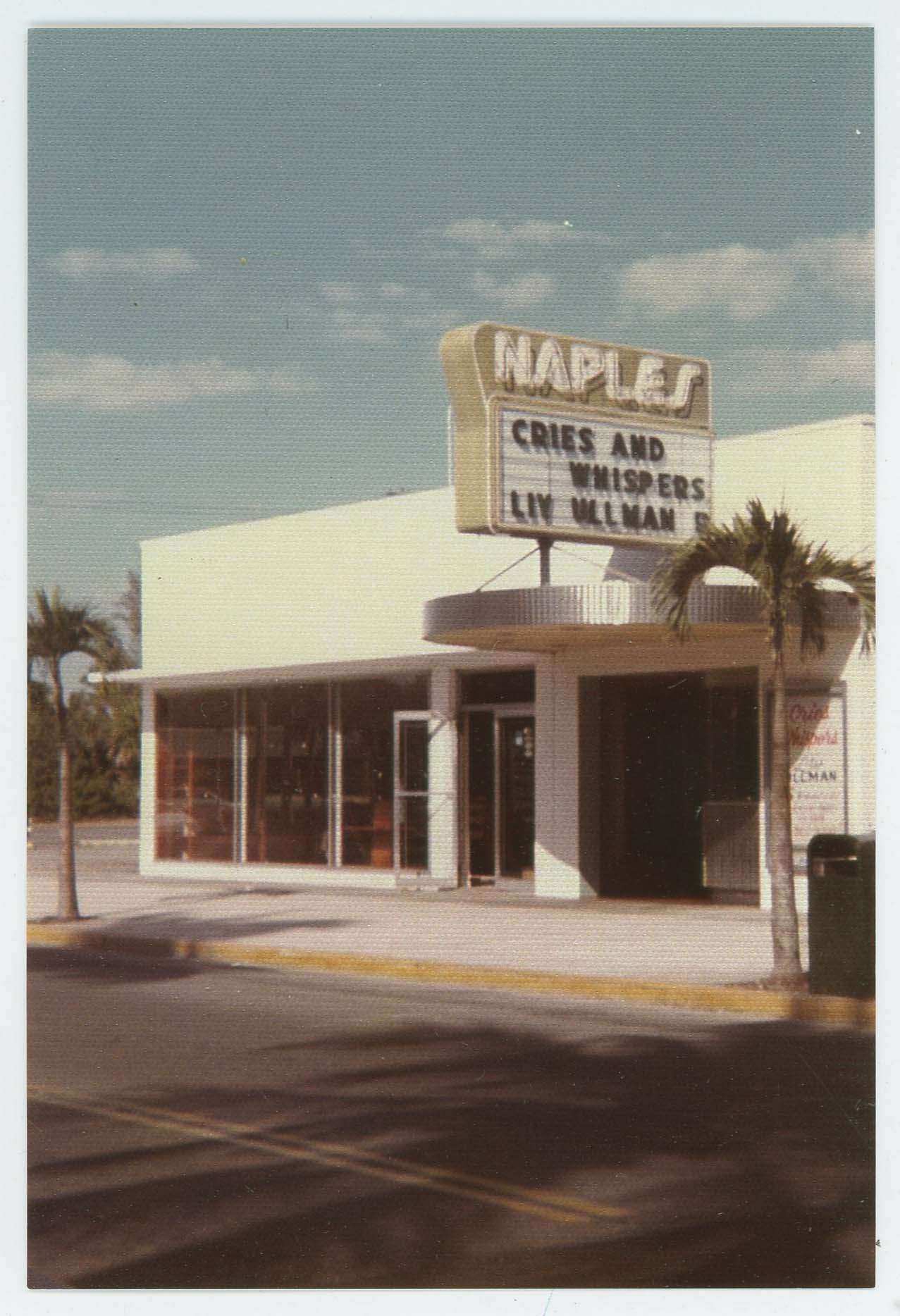
“I just was new to the destination, but in reading about the vast difference from then to now, they were talking about how there were really only two ways to get down to Naples from Fort Myers. One was on a very rickety road that would take pretty much the whole day through a horse and buggy, or a steamship that was four hours down to the pier. Yet, certainly, the trek was treacherous on the Gulf depending on the weather,” Beirnes says. “But, basically, it was just a dot on the map, and they had a pool that was dug into the ground behind the hotel. The pier itself had almost like railroad ties that went all the way from the end of the pier right to the hotel.”
Beirnes notes how fast the destination has grown when one considers that they used to ring a bell every evening just before the generator would turn off power to the hotel, signaling it was bedtime. The hotel, of course, was the business hub then and the center of everything.
“It’s quirky, it’s fun, and yet it’s really endearing to know that it wasn’t that long ago,” he says. “It’s fascinating to connect the history that we drive past almost every single day.”
Although 100 years is a long time, at the same time, it doesn’t feel that long ago, Beirnes said.
“You have to really admire someone who saw the rawness of what was this region and realize just what it could be,” he says. “I don’t think they ever had the vision of what it has become, but certainly they had the unfiltered appreciation of what paradise could be. That’s for sure.”
Florida developer Ed Crayton bought Haldeman’s holdings in 1914 and further developed the town, while businessman and county namesake Barron Gift Collier spurred wider development in the region and bankrolled the completion of the Tamiami Trail, connecting Naples to Tampa and Miami.
“By the 1920s you had a growing year-round population here, but it wasn’t that big,” Telischak says.
Third Street South was the main street then. The two-story Naples Mercantile building, built in 1919 near the hotel, housed Naples’ first store, the Seminole Market, where Campiello Ristorante & Bar is today on Third Street.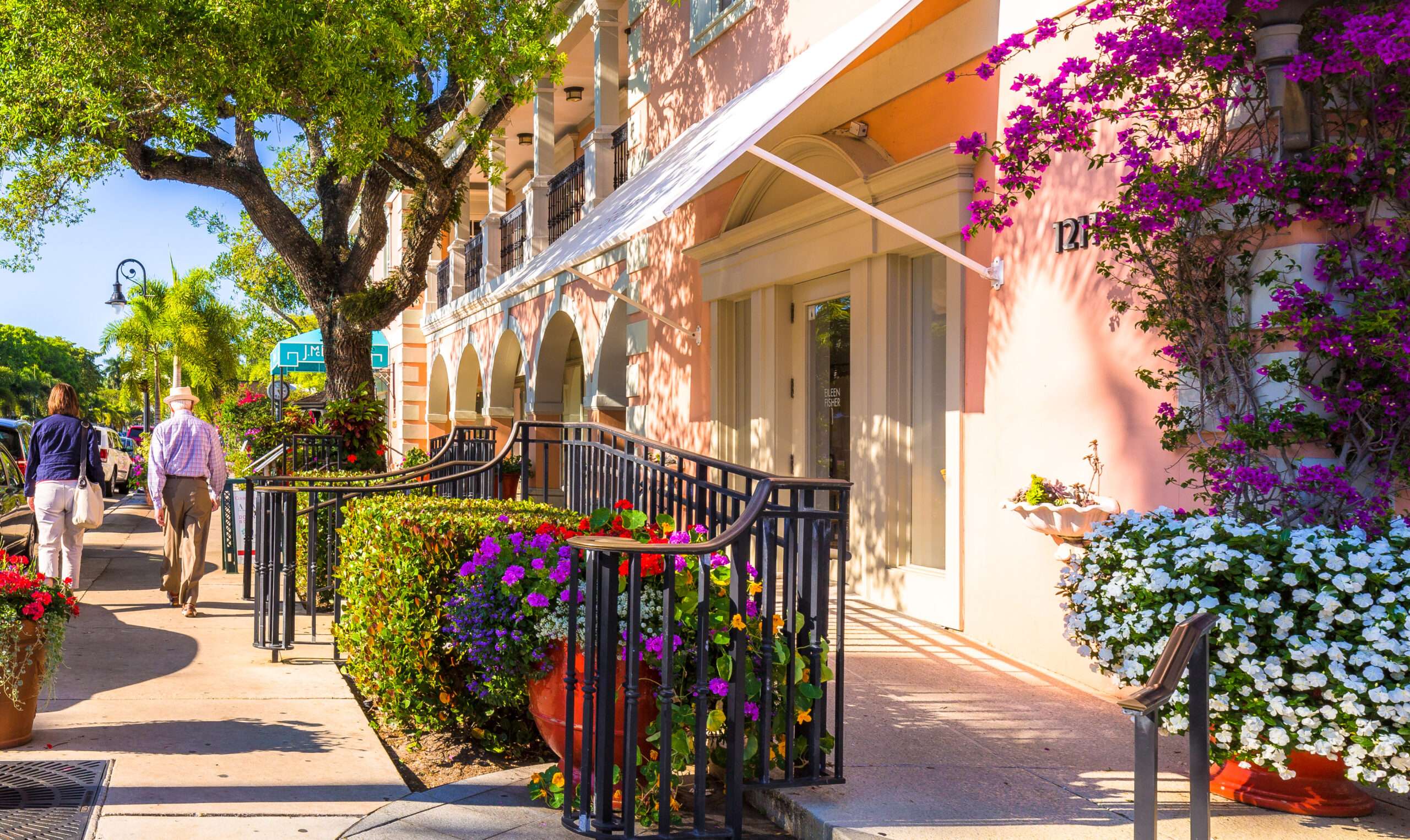
“The storefront wasn’t flat like it is now. You could actually kind of drive underneath it. When I was a kid, it was kind of a portico,” says Jean Walker Humphries, whose family moved from Marco Island to Naples in 1921, when the population was only 125, and developed the luxurious Aqualane Shores neighborhood of Naples. Her uncle, the late James Lorenzo Walker, was a lifetime local resident, a Collier County commissioner, a state representative and the namesake for Lorenzo Walker Technical College in East Naples.
The Olde Naples Building, across the street at Broad Avenue and Third Street, was built in 1921 and was Naples’ first town hall and courthouse. It’s also remembered as the town’s first church, doctor’s office, pharmacy, movie theater, playhouse, library and real estate office.
Now a rustic shopping and tourist destination, Tin City’s legacy began in the 1920s when commercial fishing pioneers built docks and tin-roofed buildings along the Gordon River, to service fishing fleets and operate a clam and oyster processing plant. The nearby Naples Depot was established in 1928 just across Tamiami Trail.
The main street in town eventually became Fifth Avenue South, which created Four Corners where it met the Tamiami Trail. “The first traffic light we got in Naples was on the corner of Third and Fifth, but then after a while that actually got taken down. And then, the first one that stayed was the one on Four Corners, and then Third and then the one that would be on Eighth,” Humphries says.
Texaco and Standard Oil operated gas stations at Four Corners. The Rexall drug store was where Caffe Milano is today on the corner of Eighth Street South and Fifth Avenue South. The Bank of Naples was where Starbucks is today on Fifth, while the Wynn family had Sunshine Super Market, the predecessor of Wynn’s Market, where Yabba’s Island Grill is today.
Humphries eventually had a clothing store, Dor-Len shop, where Aqua restaurant is today on Fifth. But it was the second-oldest clothing store in town. The oldest was Dyke’s, across the street.
Naples didn’t extend very far north at that point. “When I was a kid, we used to camp out with the Girl Scouts on the property where the [downtown] Naples hospital is now. That was the woods,” Humphries says.
“My grandpa used to tell me all the time that someday we would be all connected between Fort Myers and Naples, and everybody thought he was nuts, of course,” she says. “But it happened.”
Collier milestones
May 8, 1923
Collier County was created when Florida Gov. Cary A. Hardee signed a Senate bill to officially create Florida’s 62nd county, named for pioneering businessman Barron Gift Collier
July 7, 1923
Collier County’s new Board of Commissioners held its first meeting at the Rod & Gun Club in Everglades City
Dec. 1, 1923
Town of Naples was incorporated
Jan. 7, 1927
The Orange Blossom Special, the flagship locomotive of Seaboard Air Line Railway, was the first passenger train to arrive in Naples
April 26, 1928
Tamiami Trail officially opened to traffic in Everglades City, completing the first paved highway between Tampa and Miami
Feb. 22, 1936
Cory Osceola and other Seminole and Miccosukee Indian leaders met with Florida Gov. David Sholtz near Monroe Station to exchange messages of peace and friendship
April 24, 1938
The ferry boat to Marco Island was replaced by a bridge and highway across Marco Pass
Dec. 23, 1943
The U.S. Army activated a military base at Naples Army Air Field to train pilots for aerial combat during World War II
March 20, 1944
A 5,600-acre tract on Tamiami Trail East was deeded to the state for preservation as Collier-Seminole State Park
Dec. 6, 1947
President Harry S Truman dedicated Everglades National Park in Everglades City
Feb. 15, 1949
The Bank of Naples, the town’s first bank, opened on Fifth Avenue South
May 25, 1949
Florida Legislature approved the Naples charter, changing it from a town to a city
June 13, 1949
Town of Naples charter was abolished, and the City of Naples was created as a municipal corporation

